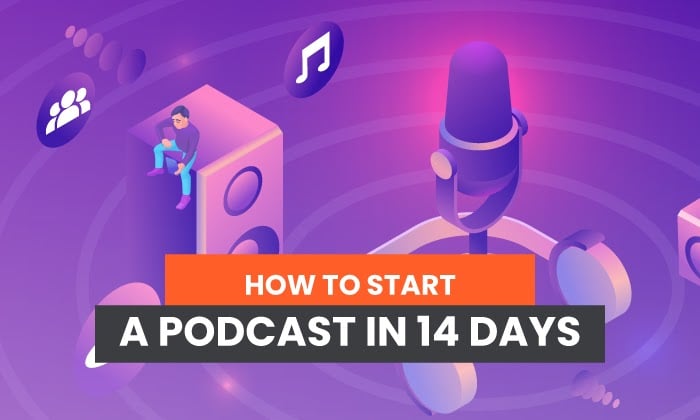
Between the sound equipment, hosting options, learning to edit, and everything else that goes into starting a podcast, the very concept can be overwhelming. But, I’ll let you in on a little secret: It isn’t that difficult to start a podcast.
In fact, you can get one up and running in about two weeks. In this post, I’ll outline exactly how to do that.
The order of my steps might look a little wonky to you. That’s because if you’re going to start a podcast in two weeks, actions you may typically hold off on need to occur earlier because they take longer to complete.
By no means should any of these tasks be completed in a day. The day simply indicates when you should kick off each step.
While this timeline is here to give you an idea of how to prioritize your work, you needn’t follow it to the letter. If you’re working with a team, some of these steps can happen simultaneously.
For instance, you can have your creative department working on your artwork while editorial hashes out the content calendar and you reach out to potential guests.
Why Start a Podcast?
According to Edison Research, the number of monthly podcast listeners in the U.S. grew by 17 million people from 2018 to 2019. And the number of podcast listeners is expected to increase by 20 million each year, passing 160 million by 2023.
Suppose you’re looking for a new avenue to build revenue, raise awareness, or improve conversions. In that case, podcasting may just be the way to do it—particularly if you’re trying to reach a younger audience. In 2020, according to Statista, almost 50% of podcast listeners were between the ages of 12 and 25, and 40% were between 25 and 54.
Start a Podcast Day 1: Do Your Research on Radio and Podcasting
Horror writer Stephen King has written more than 50—and sold about 350 million—books. His advice to new writers? Read. Read everything you can get your hands on because reading other people’s work and understanding how all kinds of novels are written informs your own writing.
The same is true of podcasting. Listen to all kinds of podcasts from a variety of genres. Listen to radio shows, too, both old and new. They are, after all, the ancestors of the modern podcast.
Take notes when you hear something you like—a format, an interview technique, an introduction, anything. When it’s time to construct your podcast, you can pull out your notes and incorporate those elements into your show.
Start a Podcast Day 2: Research and Purchase the Right Podcasting Equipment
At the very least, you’ll need a decent microphone, some recording and editing software, and a quiet place to record your podcast.
While you can use a computer microphone, an external microphone, preferably one with a pop filter, will pick up the sound of your voice better without too much background noise. You should also consider getting an isolation shield if your microphone setup allows one.
And that quiet place to record your podcast? Choose a small space if you can, ideally one with a door that can close and a fair amount of insulation in the walls.
If you can set up a room with soundproofing panels, all the better. Not only will all this cut down on background noise, but it will also reduce echo in the room.
If all that isn’t possible, something as simple as a clothesline with a blanket hanging off it surrounding your recording space can make a world of difference. You can get a special acoustic blanket or just use one from your linen closet.
Finally, research and choose the best recording and editing software for your podcast. The most popular recording apps include
- Garageband: Works with Apple products, allows you to record and edit your podcast and create original music, free to use
- Audacity: Works on Windows, macOS, GNU/Linux, and more, allows you to record and edit audio, free to use
- Apple Logic Pro X: Works on Mac, interfaces with GarageBand, offers advanced tools, $200 one-time purchase
- Adobe Audition: Works anywhere Adobe products work, lets you edit, record, and create sound effects, $20.99 per month (or part of the Creative Cloud at $52.99 per month, which includes Photoshop—though which you could work on images to go with your show)
But you could even use Skype, Zoom, or Otter.ai to do your recording, then upload your file to one of the programs above so you can edit.
Start a Podcast Day 2: Determine Your Podcast Content Goals
Every part of your content plan has a goal, right? So what would a podcast do for you? Would it:
- Raise awareness of your brand?
- Be a way to promote new products?
- Position you as an expert in your field?
Keep in mind that all content has the same ultimate goal: To solve a problem, or a pain point, for their audience.
For example, my Marketing School podcast, which I co-host with Eric Siu, directly addresses the brands’ marketing pain points. Each week, we share and discuss best practices to help brands grow their businesses.

But some branded podcasts aren’t so direct in their approach. Some brands even create content purely for entertainment—but even this kind of content solves a problem: boredom.
For example, GE has two science fiction podcasts: The Message and its sequel, Life After. These weave in existing GE technology to decode alien messages and solve futuristic problems.
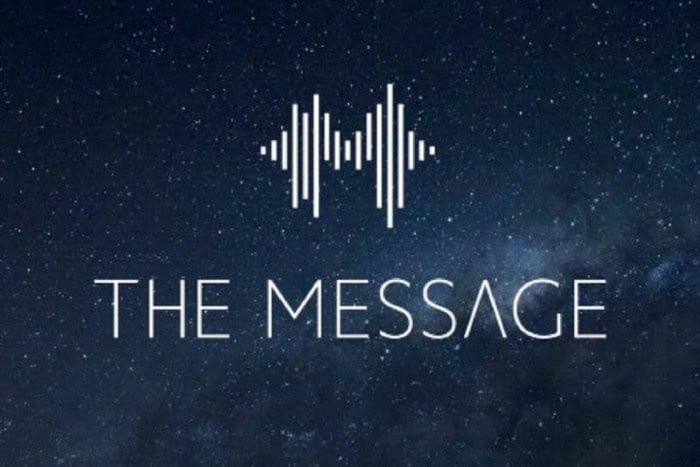
But there are plenty of ways to solve a problem for your audience while accomplishing your content goals.
GE’s goal is to raise awareness of its tech and expand its audience.
Our goal at Marketing School is to raise awareness of our content marketing services and increase conversions.
No matter your goal, remember this: A podcast can generate more than a 4% increase in brand recall, and 61% of listeners exposed to podcast ads for major brands were more likely to buy those products.
So, what’s the problem you’re trying to solve for your audience? How will you solve it?
Start a Podcast Day 3: Identify Your Podcast Audience
If you already have a strong social media presence, you may have your target audience and audience personas ready to go. And you can use your podcast to reach that audience on a different channel, particularly if they’re moving away from traditional social media.
But consider using podcasts to expand your audience. A podcast, after all, should fit into your holistic content marketing strategy. It can be yet another tool to grow awareness of your brand.
In that case, identify the audience you want to make aware of your brand—and make sure it’s one you can reach through podcasting in the first place.
Start a Podcast Day 4: Choose Your Podcast Format
I’ve talked a little bit about the format already. For example, my podcast is either a monologue or dialogue format, whereEric and I—together or separately—discuss a content or social media marketing topic and share our insights.
Monologue or dialogue formats are great for educational and how-to podcasts.
GE’s podcast follows a theater format, reminiscent of the radio dramas of old. It’s a great entertainment format. GE found a creative way to include their products, but not all brand-related podcasts directly discuss their products.
Some of the other more popular podcast formats include:
Interview Podcasts
The interview podcast is just that; a question-and-answer format where the host interviews guests on a topic related to the podcast’s content goals.
Founder and CEO of Foundr magazine, Nathan Chan, interviews entrepreneurs and startup executives in his podcast, Foundr Podcast, to help educate other entrepreneurs on everything from marketing to raising capital to growing their business.
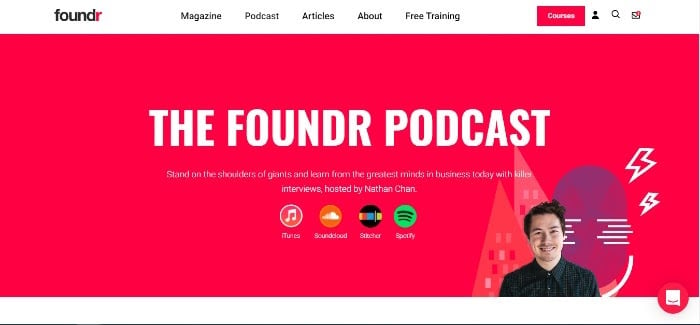
Informal Discussion Podcasts
For an informal discussion, two or three people, whether they be hosts or one host and guests, choose a topic and discuss it freely without a script. A host may have a few bullet points to keep the conversation on track, but there is no other script to speak of.
Slate Magazine’s Spoiler Specials brings movie critics together to discuss recent movies, with plenty of spoilers sprinkled in. While they don’t promote the brand, it positions them as SMEs in movies and entertainment.
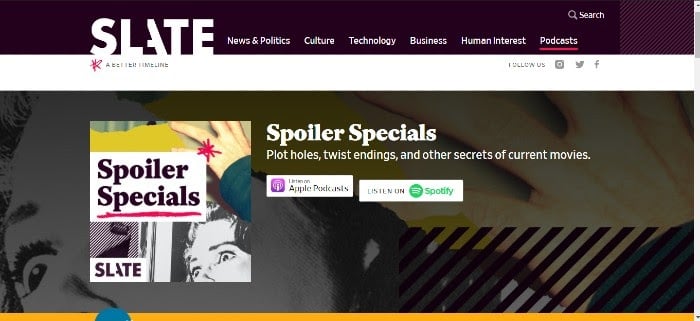
Panel Podcasts
Insurance broker Allianz hosts a panel discussion podcast called Insurance Tomorrow, where panelists discuss current events and how they affect the insurance industry.
In this type of podcast, a host kicks off the discussion and keeps a list of questions or bullet points to keep the conversation on track.
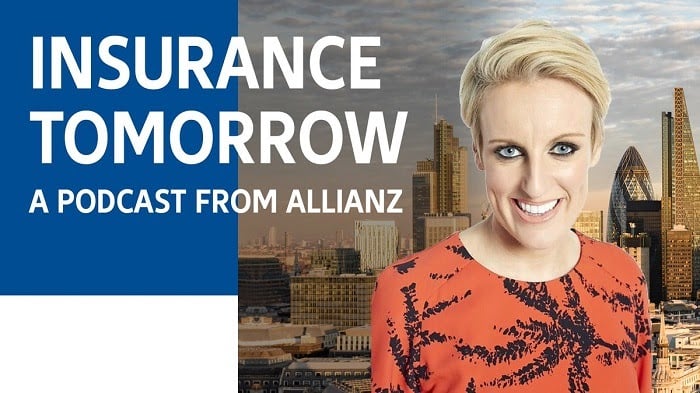
Journalistic Podcasts
A journalistic podcast can take a few forms. It can merely relay the news of the day, or it can tell longer-form stories, much like you would hear on a news magazine show.
For a branded podcast, the longer-form version is probably best. And it doesn’t necessarily have to relate to your product.
For three years and 58 episodes, Basecamp’s podcast, The Distance, used a journalistic approach to tell the stories of small businesses that had been in business for 25 years or more. The idea was to inspire other small business owners.

Start a Podcast Day 5: Begin Choosing Your Concept
Once you know your audience and your content goals, you can start brainstorming the podcast’s concept and topics.
Your concept should be unique. Take a look at other podcasts for inspiration, but make sure you’re not duplicating a podcast that already exists.
Your concept should relate to your brand and products in some way. The GE podcast, for example, is loosely related to tech.
Finally, your concept should appeal to your audience and solve a problem for them.
Choosing a concept will take market and audience research. You may even want to survey super users of your product to get an idea of the kinds of topics they would be interested in.
Start a Podcast Day 6: Start Researching a Name
There are a few ways to name your podcast. You can use your podcast’s content, your name if you have a decent following, or your company’s name if it’s well known.
For example, Blue Apron’s podcast relates to its content: Why We Eat What We Eat.
Meanwhile, celebrity Anna Faris’s podcast uses her name: Anna Faris is Unqualified.

Whatever you choose to do, make sure your title is clear, catchy, and memorable—and not already taken. Of course, it should also include keywords that help you appear in search.
You should also look up both your chosen name and variations on it, combined with “podcast,” “TV show,” “book,” “movie,” and anything else you can think of that may force you down in SERPS. Look for these not just on Google but on social media sites as well.
Start a Podcast Day 7: Begin Design of Your Podcast’s Thumbnail Artwork
Apple and other podcast hosting platforms require artwork for your podcast, so there’s something to display in search.
For this step, we’re focusing on what will appear in podcast apps themselves—what you saw above are more akin to the large cover photos (more on those later). What we’re looking at now appear more like Instagram pictures in shape:

Apple remains the big name in podcasting— after all, “podcast” is short for “iPod broadcast!” So, you want to pay attention to Apple’s recommendations for creating good cover art:
- Keep it simple and easy to recognize, with relevant images.
- Have your podcast title visible with a clear, large font.
- Keep it to a max of 3000 x 3000 pixels.
- Avoid logos that are in use by others.
- Don’t put artwork at the bottom of the image—it could end up hidden in apps.
- Consider dark mode when creating your art.
Where do you get this art?
In a perfect world, you’d have an incredible artistic team at your disposal—use them if you do. But, not everyone is that lucky, and you may need to find someone to do this work for you. Consider:
- Looking at the show notes of podcasts to see who they credit for logo creation. Could you contact them as well?
- Checking out freelance sites like Fiverr for freelancers.
- Creating your own via apps like Canva—just double-check any copyright rules before nailing down the final product.
Start a Podcast Day 8: Create Your Content Calendar
Now it’s time to determine how often you’re going to post new episodes and what those episodes will be about. Brainstorm topics and keywords for your episodes, and write down a list of guests you might want to have on the show.
Create a content calendar that includes enough time to schedule your guests (if you have any) or write your script (if that fits your format), and record, edit, and post your podcast.
Start a Podcast Day 9: Write Your Podcast Script and Find Your Music
Developing a full script can take anywhere from a day to a few weeks, depending on the format, amount of research needed, and how many review levels it has to go through. But here are the basics.
The Podcast Script
The type of script you write—if you write one at all—depends on the format you chose for your podcast. Most podcast scripts include the following:
- Theme music
- An intro that mentions the show’s name and concept, describes the episode’s topic (including keywords) and introduces any guests.
- An outro, or conclusion, that wraps up the show and includes a call to action. Your call to action should tell your audience to rate, review, subscribe, join you on social media, and, most importantly, spread the word.
If you want a more informal feel to your podcast, you can simply write an outline or some bullet points of what you want to talk about and then riff on your topic from there. Or, you could write a full script, but be ready to go off track and banter with your cohost.
If you’ve chosen a story-telling format, like GE’s podcast, or even a how-to format, you will need to develop a fully fleshed-out script.
For a tutorial on scriptwriting, check out NPR’s guide for students. It’s full of helpful tips to get you started.
Podcast Music and Sound Effects
Most podcasts have some kind of music before the intro to their show. If you want something unique to your podcast that is consistent with your branding, this is something you’ll want to commission.
Like with artwork, you can bring on a local musician or friend, a freelancer from a site like Fiverr or via a local job board, or, ideally, use someone in your office. No matter who you use, be sure to give them credit on every set of show notes—it’s just good practice.
If you don’t want to commission someone, you can look into royalty-free music sites, such as bensound.com. These generally allow you can browse music in a variety of genres.
There are also free and subscription services for sound effects, such as Zapsplat, if you need sound effects for your podcast. Like with music, some of the recording options we talked about a while back also have these available.
Start a Podcast Days 10 and 11: Record Your Podcast
It’s finally time to record. There are some best practices you should follow, though. Even if you’re comfortable speaking in front of a crowd, setting up a sound system and using a microphone is different for podcasts.
Using Your Podcasting Microphone Correctly
The good news is that most of your recording equipment—especially if you bought from some superior brands—will likely have videos you can watch to help you set things up and use them appropriately.
You can generally find these on the company’s website or YouTube. On YouTube, you may also be able to find podcasters using them, and their tips maybe even more helpful than the company’s because they’ve done practical troubleshooting already.
Here are a few best practices:
- Be sure your microphone is stable: If you’re using a mic stand of any sort, make sure it’s not easy to knock over.
- Get your distance right: Being too far will make you sound like you’re speaking from a distance, while being too close will make you either sound too loud or catch too many things, like breaths. Two to three inches is usually best, but you’ll want to try different things with your microphone. A pop filter may allow you to be a bit closer to your mic.
- Angle your microphone appropriately: There are a couple of ways to do this, and what works best for you is up to you. You could have the mic angled directly at your mouth, which may provide you with the highest among of clarity and “fullness” of your voice. However, you could also turn your mic slightly away, which could mitigate any issues caused by high frequencies.
- Check your mic level: “Gain” and “input level” mean the same thing, and your microphone setup may use either term to describe the control for how much signal is recorded. Speak into the microphone in the tone of voice you plan to use and adjust until you’re in the -10dB range. If you’re using headphones adjust the knob until you hear buzzing, then turning it down a bit if you’re using GarageBand or Audacity.
- Do a test recording: Use the full range of the voice you plan to use for your podcast. If you know you’ll get excited or upset, talk about those things in the way you would on your show—as well as things you’d be speaking about in your normal voice—so you can hear yourself and change levels and mic angle and distance as needed.
Best Practices For Recording Your Podcast
Now that you’ve tested everything out with your microphone and other recording equipment, it’s time to get down to business. Make sure your recording studio is closed off to others and that people know not to enter while you’re working, then get started!
Like with microphone use, though, there are some best practices while you record:
- Warm-up your voice first: Do some vocal exercises, so your voice is at its best the whole time you record.
- Recheck your levels: You can sometimes do this before you even begin recording, sometimes after. Make sure everything still looks right and adjust if needed.
- Start with silence: Leave about five to ten seconds of actual silence at the beginning of the episode. Watch your levels to make sure it’s not picking up your breathing or any other noise that won’t usually be there. This lets your app read the actual level of background noise so you can edit appropriately later.
- Watch for filler words—but don’t panic about them: “Filler words” are the things we say without realizing it, like “um,” “like,” and “okay?” when they’re not adding anything. We all do this, so don’t feel embarrassed by them. Be aware of your filler words and try to avoid them, but remember you can often edit many of them out later. As you go through more episodes, chances are you’ll become better at not using them.
- Find a way to note mistakes for easy editing: This is especially important if you’re editing the show yourself. If something happens that you don’t want your audience to hear—a big stumble over words, a sneeze, a barking dog, a passing train, something that just came out wrong, etc.—find a way to make them visible in your editing process. This could be a long silence or snapping your fingers at the microphone three times, as that will show a great change in volume. You could also note the time the issue happened. If you have someone else editing, you can also just say “cut that out” directly in the recording.
- What if a noise issue is unavoidable? Let your audience know. For instance, if you can hear your neighbor mowing the lawn, but you have to record right now, just mention it and move on. Or if you’re recovering from a sore throat but can’t miss an episode? Just tell them. People are usually pretty understanding.
- Keep excess noises away from your mic: Taking a sip of water? Turn away. Notes on paper? Keep them far away from your mic. Blowing your nose? Well, maybe make the editing note above.
Start a Podcast Days 12 and 13: Get to Editing
Allow at least a day for editing your podcast and then another day for final approval. This is when you add in your music and sounds, edit mistakes, or take out entire parts that you don’t feel add any value to the podcast.
Like recording, there are some best practices for editing. If you’ve got a pro on board, you probably don’t need to worry about this. But if you’re doing it yourself, you should take some time to learn about these. Thankfully, YouTube comes in very handy for things like this.
While the best practices will vary slightly based on the editing software you’re using, here are the basic steps you should take while editing—and be sure to wear headphones while you do it. While this advice is intended for Audacity users, it applies to most editors:
- Listen to the material before you do anything else. Note the times of things you want to change.
- Use the noise reduction tool to get rid of any background noise—this is why we recorded that silence at the beginning. (We also did this so you have a background noise level you can insert elsewhere, so don’t delete this silence until you’re done.)
- Get rid of what you don’t want content-wise.
- Remove other noises you don’t want. This includes filler words—though be careful not to overdo this because you don’t want to sound unnatural. If cutting a filler word or other short piece of audio makes you sound like your words are jumping on top of each other, that’s where pasting in some of that silence from the beginning comes in.
- Normalize at about -2.0.
- Amplify anything that’s too quiet.
- Compress and equalize.
- Add in your music, sound effects, and—unless your hosting site does this automatically—any advertisements.
For very detailed advice about editing, check out this article from Podcast Rocket.
Start a Podcast Day 14: Post and Promote Your Podcast
Okay, this one is a bit out of order—we’re talking about in-the-trenches promotion, not pre-show promotion. When you’re starting a podcast for your brand, you should let your audience know before your first episode. Hype them up.
Here’s a fun fact: If you post your podcast to the three major platforms—Apple Podcasts, Spotify, and Google Podcasts—you’re already in front of more than 95% of all podcast listeners!
One common misconception about podcasting is that these platforms host your podcast. Not so. You first need to sign up for a hosting site, such as Buzzsprout. Some hosts automatically submit your podcast to several platforms, while you may need to do it manually for others. You do this with your RSS feed, which you can find in your account on your hosting site.
Your RSS feed will need the right tags, your artwork, and at least one episode to be accepted. Once you have all that submitted, you’re up and running!
Now it’s time to promote your new podcast. Utilize your social media and own website for this, but be aware of other avenues as well. For instance, if you have a guest on the show, make sure they’re going to advertise their involvement. You could consider purchasing ads on social media or other sites, too. And if you have a brick-and-mortar store? Put up signs with QR codes to your podcast’s website, post on your main site, social media, or use Linktree.
Beyond Two Weeks: Track Your Podcast
Your podcast host, Apple, Google, and Spotify all provide analytics, so you can track how your podcast is doing. Additionally, Chartable compiles several apps’ data, so they could also be helpful. Use that information to inform when you should post, how well you’re promoting it, and what your next episode should be about.
Be sure to Google your podcast several times over the following weeks to see if you’ve been picked up by platforms you didn’t know about so you can add these options to your “where to listen.”
You should also keep an eye on reviews. Many podcast apps don’t have reviews, but Apple does. Reviews aren’t the end-all, be-all, but they can help you move up charts, better advertise your show (if the reviews are good), and see where you need to improve. Just bear in mind not all reviews are valid—they could be from rivals or from people who just like to complain—so use your judgment about how to go forward after reading them.
If You Can’t Start a Podcast From Scratch, Partner With Someone Who Can
Even enterprise brands need a little help podcasting sometimes. If you don’t have the time or resources to start your podcast, try partnering with a brand or business that can.
Sephora, for example, partnered with GirlBoss Radio to create a branded podcast called #LipStories. The podcast features interviews with remarkable women from around the world.
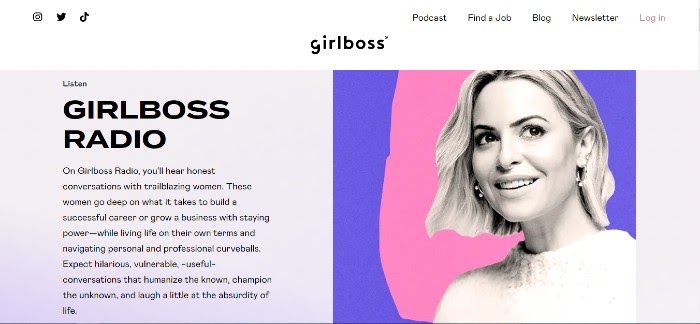
Conclusion
Podcasts can help your brand reach an entirely new audience, and starting one doesn’t have to be as stressful as it may seem on the surface. If you follow these steps and make your podcast SEO friendly, you may be well on your way to increasing your sales.
And you may even have some fun along the way.
What kind of podcast are you thinking about? How can it help your brand?
The post How to Start a Podcast in 14 Days appeared first on Neil Patel.
from Blog – Neil Patel https://ift.tt/37jw8II
via IFTTT
No comments:
Post a Comment